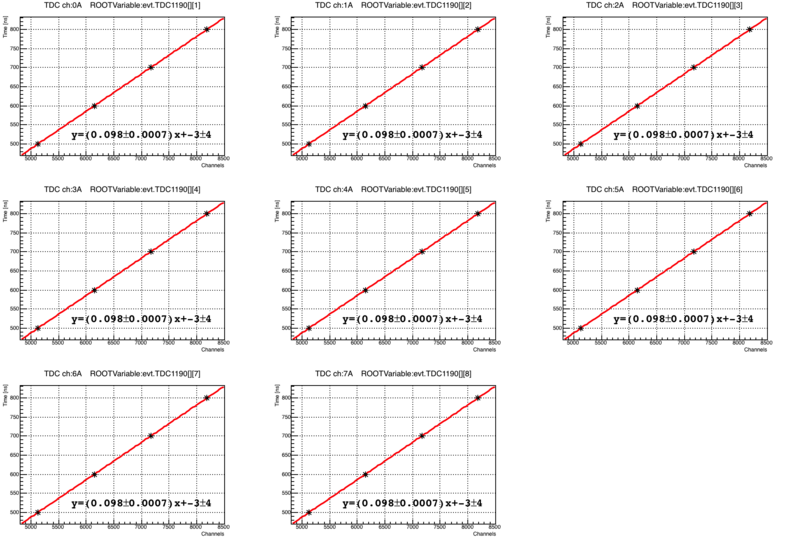Difference between revisions of "JB DAQ"
(→Notes) |
|||
| Line 23: | Line 23: | ||
[[File:DaqCali.png|800 px|thumb|center]] | [[File:DaqCali.png|800 px|thumb|center]] | ||
| − | == | + | =Miscellaneous= |
| − | + | ==Pace of signal== | |
| − | + | The pace of a signal in a 223/U cable is 1.5 ns/ft. | |
| + | |||
| + | ==Dead time of the GG800-01 Octal Gate and Delay Generator== | ||
| + | When an input receives 2 or more pulses over a duration less than or equal to the delay plus | ||
| + | the output pulse width plus 20 ns, '''only''' the final pulse to reach the input will appear in the delayed output signal. | ||
Revision as of 22:13, 17 May 2016
Back JB Analysis
DAQ commands
Source CODA and ROOT
source ~/CODA/2.6.2/setup source /home/daq/src/root/root-5.34.00/bin/thisroot.csh
Run the bash script titled 'jeff', which takes the run number as an argument. This script will automatically convert the .dat file to a .root file and then open it in root. The script: File:Jeff.txt.
bash jeff 4716
The first index of evt.TDC1190 is the hit #. The second index increases consecutively with TDC channel number, but the index starts from 1, while the TDC channels start at 0.
Common ROOT plot commands for copy-past:
First hit minus second hit:
R1DC->Draw("(evt.TDC1190[2][1]-evt.TDC1190[1][1])")
PMT difference:
R1DC->Draw("(evt.TDC1190[1][2]-evt.TDC1190[1][3])/10","evt.TDC1190[1][2]!=0 && evt.TDC1190[1][3]!=0 && evt.TDC1190[1][1]!=0")
PMT Sum, where evt.TDC1190[1][1] is the trigger:
R1DC->Draw("(evt.TDC1190[1][3]/10+evt.TDC1190[1][2]/10)/2-evt.TDC1190[1][1]/10>>PMTSum(1000,-500,500)","evt.TDC1190[1][2]!=0 && evt.TDC1190[1][3]!=0 && evt.TDC1190[1][1]!=0")
TDC Calibration
The data was collected by taking the channel difference between two pulses with a delay of 500,600,700, and 800 ns.
Miscellaneous
Pace of signal
The pace of a signal in a 223/U cable is 1.5 ns/ft.
Dead time of the GG800-01 Octal Gate and Delay Generator
When an input receives 2 or more pulses over a duration less than or equal to the delay plus the output pulse width plus 20 ns, only the final pulse to reach the input will appear in the delayed output signal.
